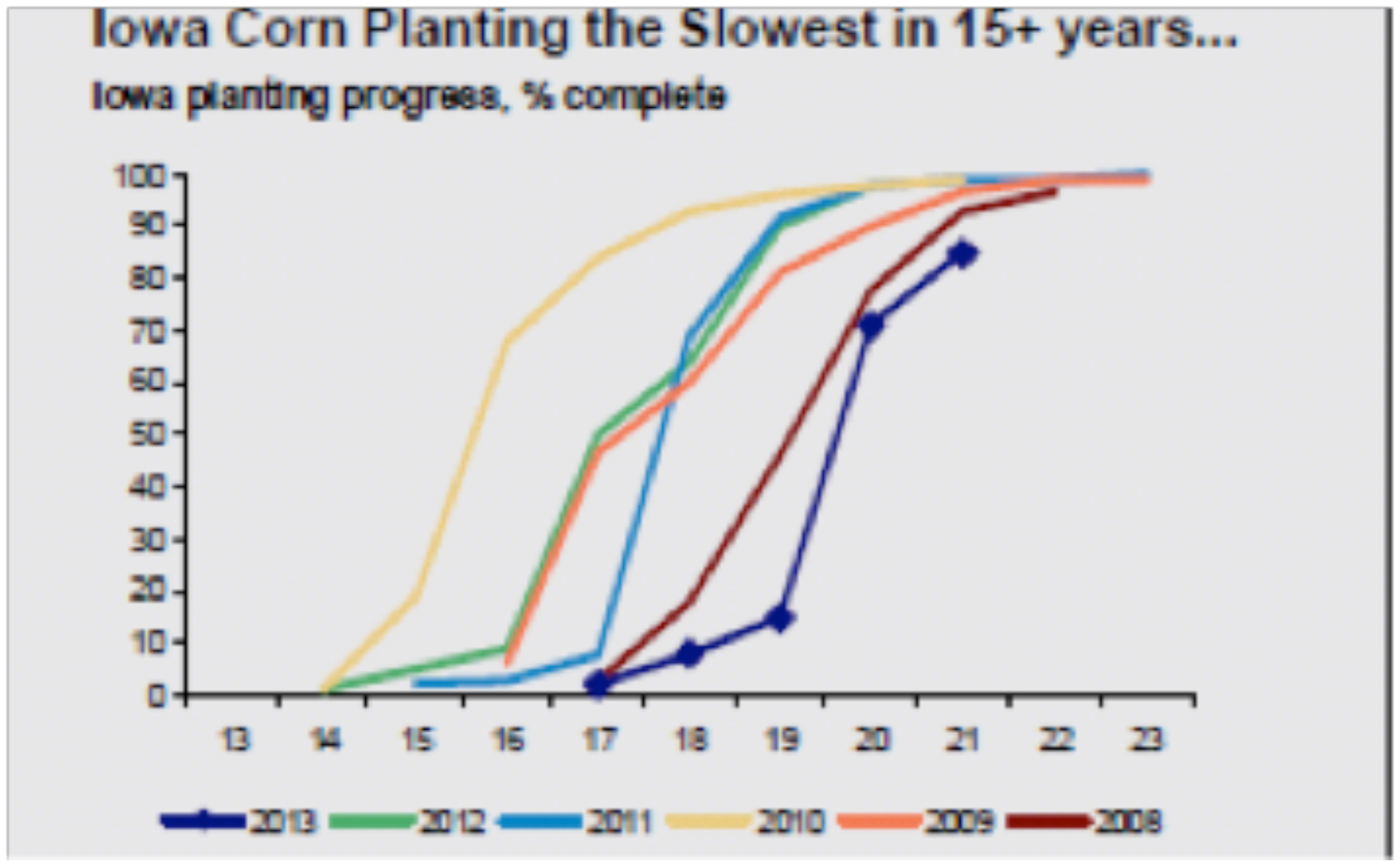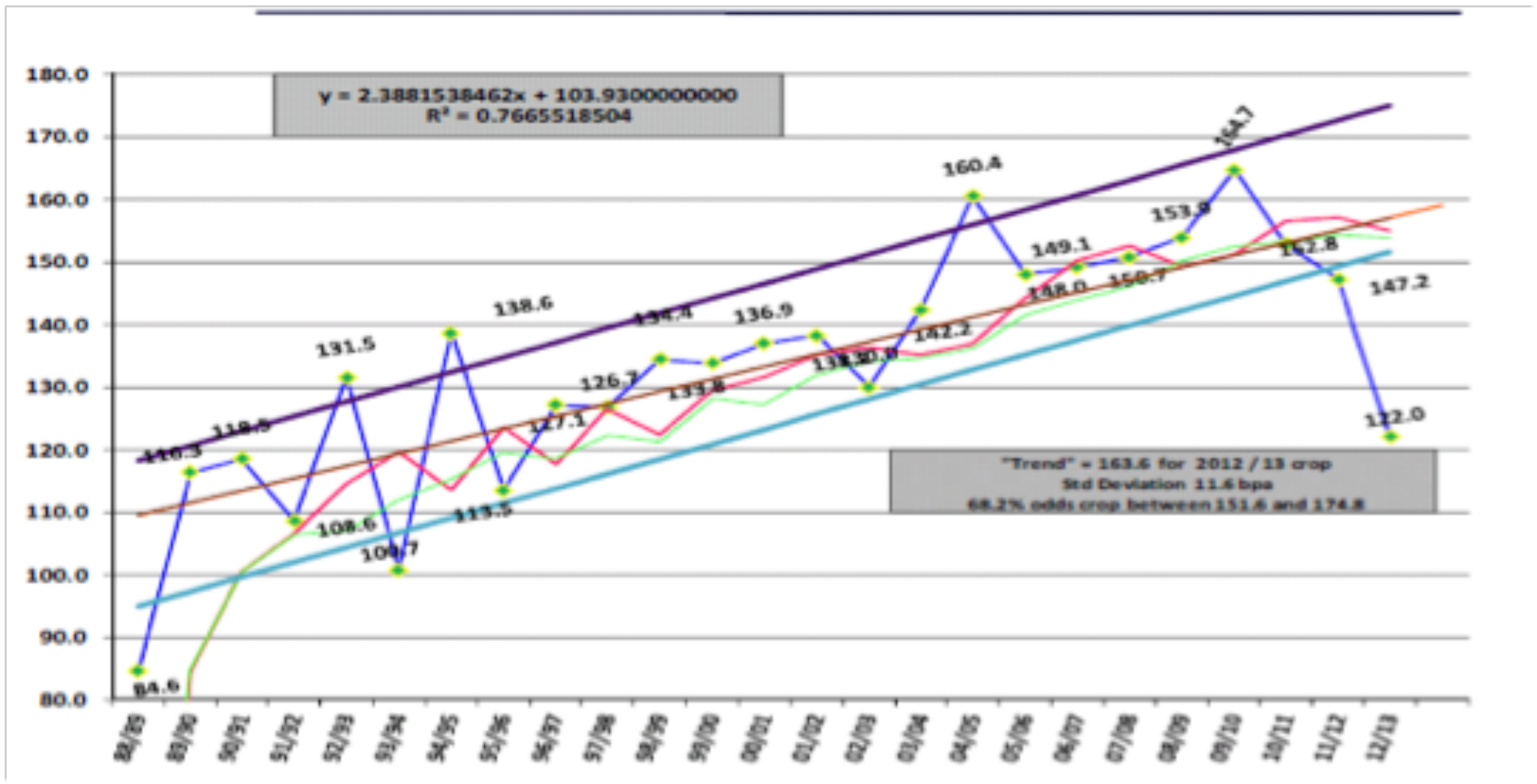The agricultural news services are full of stories this spring about the delays to seeding and the slow planting progress. From early January through to the end of March, a succession of outlook reports from Informa through to the USDA indicated record planting intentions for the spring of 2013, and set the stage for large production estimates for the year. With the focus from mid-April to June shifting to the slow pace of planting and poor growing conditions, we need to stop for a few minutes and reset the expectations for North American grain production in 2013.
The March 28, USDA Planting Intentions report placed this year’s corn crop at 97.3 million acres. Rivaled in size only by the 96.3 million acres of the 2012 crop, we were clearly expecting either the biggest, or second biggest corn crop since the Second World War. It is obvious now with slow seeding and waterlogged fields that this acreage needs to be reduced. Lanworth, (a fairly conservative analyst), published on May 28 that they expected to see an 800,000 acre decline in U.S. corn plantings, but there are other reports who suggest that the acreage reduction could be as big as four million acres. On June 7, there are still people planting corn, so it is premature to try to nail the crop size to a finite acreage, but it is very safe to say that it will be below the spring’s expectations, and likely in the 94 to 95 million acre range.

While the size of the crop area is certain to be reduced, of perhaps greater consequence to the 2013 production is the potential decline in yield due to the later planting dates and less than ideal growing conditions. Some of the early predictions on the potential size of this year’s corn production multiplied expected harvest acres by trendline yields and came up with production estimates in the mid-14 billion bushel range, but “trendline” yield is junk science and although they made some headlines, the money in the corn market never took those estimates seriously. (Or else we would have driven new crop corn futures sub $5.00 simply on the expectation).

The bottom line is that as acreage goes up, average yield goes down simply because the planting is being forced out onto non-ideal acres. In the U.S., many of the new corn acres are coming out of the CRP land set aside, and even here in Ontario, some of the land being brought out of pasture and forage crops was not ideal cash crop soils to begin with. Most of the agronomically rational estimates at this point put the yield potential of this year’s crop in the 145 to 150 range based on growing conditions year to date.
If we harvest 85 million acre of corn this fall and it yields between 145 and 150 bu/ac, the total production for the year will still come in just under 13 billion bushels. Which is still 12% larger than last year’s crop and will still require an upsurge in demand to fully consume it. If the weather can “normalize” from this point forward, we should expect to see a 2013 corn crop in the range of 12.75 billion bu, resulting in moving 2013 crop ending stocks back into the 1 billion bu range placing stocks to use ratio at 8% to 10%.
The good news if you are a corn producer who will need to market 2013 crop corn, is that the weather has significantly reduced the expectations for the 2013 corn production and lent some support to pricing, but don’t plan for a repeat of last summer’s price rallies, as 2013 still has the potential to produce the largest North American corn crop in history.



